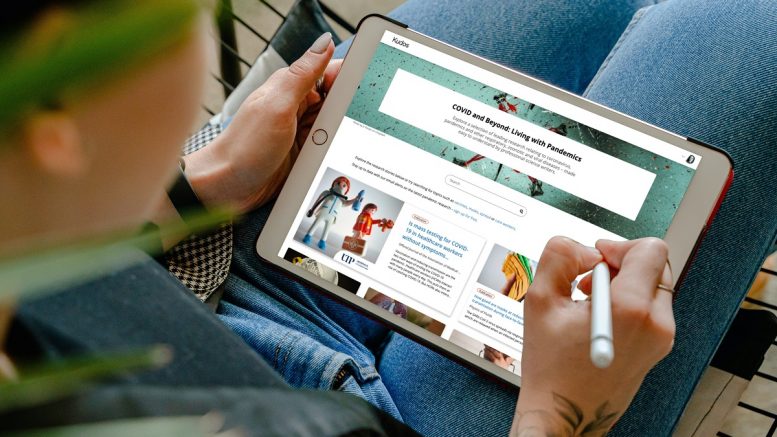In 1802, the English caricaturist James Gillray created a cartoon depicting people turning into cows after they received smallpox inoculations because the treatment included cowpox. Given that fake news about medical treatments has been around for centuries, how do we build trust between medical professionals and the general public, and ensure that people can find credible and reliable sources of information? Here Charlie Rapple, founder of research communication specialists Kudos, discusses some ways to tackle fake news in the medical research industry.
Eight in ten people in the UK come across some form of fake news in their daily lives, according to research by the newspaper association Newsworks. Helping people to spot and debunk deceptions is key to maintaining confidence in medical information. Misinformation commonly appears in two different forms: stories that are rooted in truth, but contain inaccuracies, either by accident or to exaggerate a point, and stories that are deliberately incorrect to mislead the reader or gain attention because of the claims. The pandemic provided the perfect breeding ground for fake medical news – increased interest in public health, a new virus about which people had no previous knowledge against which to test new claims and social distancing and lockdowns cutting people off from healthcare professionals. The World Health Organization (WHO) has called the ensuing growth in misinformation an “infodemic”.
Do your research
More than one in four of the most viewed COVID-19 videos on YouTube in spoken English contains misleading or inaccurate information, according to BMJ Global Health. Not only is patients’ own health at risk; misinformation also undermines trust in scientific research and medical professionals, and threatens the overall effectiveness of the global response to the public health emergency.
But individuals are not as powerless as they might think, when it comes to validating information. Trustworthy information will provide sources for the facts and figures presented; if no sources are given, that is an immediate red flag that the information may not be trustworthy. Some sources are given, but they don’t seem to originate from certified experts on the topic. At the other end of that spectrum there are also people or organizations with an obvious agenda bias. Reference to an academic organization – a University, Royal society or institute – is a very strong indication of credibility.
Increasing understanding
Misinformation is not the only challenge we face when it comes to public understanding of medical information. Research is typically communicated in academic or clinical language, making it hard for patients, carers, policy makers and others to fully understand findings and recommendations.
Scientific research platforms, such as Kudos, provide the public with access to plain language explanations of scientific research, so anyone can easily find and understand the key learning points. It partners with publishers to create one easy place that the public can learn from. Accessing platforms like this creates the opportunity for the public to confidently know the sources are fully verified and supported by academic research and discount claims that oppose these facts.
Use the right tools
There are many tools that are specifically dedicated to checking if facts are fake news or not, which are often free for general use.
The Ferret Fact Service, for example, launched in the 2017 as the first Scottish fact-checker accredited by the International Fact-Checking Network fact-checkers’ code of principles. The service takes facts that the public want checked and releases their findings with a full list of source documents, data and links. This allows the public to see their research and fully understand how they came to their conclusion about the credibility of the information.
The BBC also has a page on its website called Reality Check, to dispel any incorrect claims that politicians or general news outlets make about the medical industry. By accessing and regularly reading sites like these, the public can create more rounded opinions about the promises and claims made by trusted advisors and people in power.
Report fake news
According to Reuters Institute for the Study of Journalism, 34 per cent of people globally come across poor journalism, mistakes and clickbait every week. If each person who knew the story was incorrect reported or opposed the claims with clear evidence, this percentage would drastically reduce. Healthcare workers are perfectly placed to engage with patients and the wider community to help educate them with credible sources of information and tackle disinformation from the source. Healthcare providers are some of the most trusted voices in the medical industry, so they can make a true impact during common discussions about truthful science by directing people to sites, like Kudos, to help develop their understanding further.
Fake news has been part of medical history long before James Gillray created his cartoon, but due to greater access to online news and discussions about medical research, it is becoming more prevalent. Ensuring that all research is verified and from a credible source is key to maintaining accurate knowledge about medical advancements.
Read explanations of COVID research on our showcase https://www.growkudos.com/showcase/collections/coronavirus.





